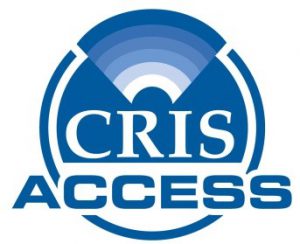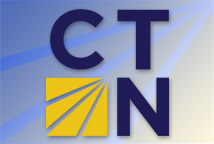Cybercrime Attacks on CT Residents, Businesses Ranked Midway Among States
/Connecticut is among the 25 states that have seen residents lose the most as targets of criminal activity on Cyber Monday, the busiest on-line day of the year, according to a new analysis released just before this year’s edition of the annual on-line shopping spree known as CyberMonday.
OpenVPN, Inc. released details on a groundbreaking study that ranks how age, sex and where an individual lives could predict their likelihood to become a target of criminal activity on Cyber Monday.
"Connecticut is generally thought of as a very safe state with low crime rates. That's the unique thing about cybercrime and identity theft - you can live in the nicest house on the block and still be very vulnerable," says Francis Dinha, CEO of OpenVPN.
California is ranked the worst state in the country for total reported cybercrimes, fraud, and identity theft per capita in 2015 and 2016. Connecticut was the 21st worst in the analysis, just about in the middle of the pack.
The study data was culled from the FBI’s IC3, or Internet Crime Complaint Center, as well as the federal government’s Consumer Sentinel Network (CNS) databases.
In 2016, the state’s residents lost $6,960,531 total to internet crime, an average of $2,734.98 per person. Overall, 28,595 state residents reported cybercrime of some sort in 2016 — mainly men and people in their 50’s, the study found. Internet crime complaints totaled 2,545, total fraud complaints reached 21,117 and identity theft complaints totaled 4,933, according to the data compiled.
"Connecticut follows national trends in that more men than women are victimized, and older individuals have been more deeply affected,” Dinha added. “OpenVPN encourages all Connecticut citizens to educate themselves about how cybercriminals gain access to private information and stay safe this Cyber Monday."
“What came as a surprise in this report,” said Gary McCloud, VP of Business Development for OpenVPN, “Is that men actually fall victim to cybercrime 75 percent more often than women.”
Men and women have different shopping habits. The study noted that men actually spend more than women online, so that fact alone may the reason men fell victim to cybercrime more often to women - and may continue to do so. In fact, men fell victim to cybercrime more 75 percent more often than women—falling victim in 38 of America’s 50 states – including Connecticut - and Washington D.C.
The state’s male ranking is seventh worst among the states, female ranking is fourteenth worst. By age group, the state’s best showing is among those age 20-29, ranking Connecticut 28th among the states; the worst showing, a ranking of 13th, in the 50-59 year old age group.
 The safest states cited in the study include South Dakota, North Dakota, West Virginia and Maine, with Vermont ranking as the safest at #51. The worst states were California, Florida, Nevada, Texas, New Mexico, New York, Arizona and Virginia.
The safest states cited in the study include South Dakota, North Dakota, West Virginia and Maine, with Vermont ranking as the safest at #51. The worst states were California, Florida, Nevada, Texas, New Mexico, New York, Arizona and Virginia.
All 50 states and the District of Columbia were ranked from most to least total victims of cybercrime, equally weighted per 100,000 people for the total number of internet crime victims, fraud victims, and identity theft victims. The study also took into account the average dollar loss per victim of internet crime and average dollar loss per victim of fraud.
Among the recommendations to improve safety and deter cybercrime:
- Do NOT use a public wifi signal unless you have a Virtual Private Network (VPN) which will encrypt information on your computer, hiding it from online predators.
- If shopping from home, make certain your home wifi signal is password-protected. Otherwise, someone simply driving down the street could access the private information on your computer.
- When shopping online, look for verification you’re on a secured site. This may be something as simple as a padlock in your internet window.
- When possible, use a credit card as opposed to a debit card which is linked directly to your bank account.
All of the data used for total cybercrime compilations based on age and gender was pulled from the 2015 FBI crime database; 2016 was not available.





 Michelle Hargrave, Deputy Director at the NBMAA, said, "The New Britain Museum of American Art is thrilled to partner with CRIS Radio in this endeavor to bring greater accessibility to the institution. The Museum is committed to being a welcoming, dynamic, distinguished, and educationally ambitious art museum, and we are very excited that this opportunity will open our galleries to a broader audience."
Michelle Hargrave, Deputy Director at the NBMAA, said, "The New Britain Museum of American Art is thrilled to partner with CRIS Radio in this endeavor to bring greater accessibility to the institution. The Museum is committed to being a welcoming, dynamic, distinguished, and educationally ambitious art museum, and we are very excited that this opportunity will open our galleries to a broader audience."

 Once underway, the new daily service will mean that from New Haven to Hartford, trains will increase from six to 17 per day. Between Hartford and Springfield, trains will increase from six to 12 per day. A new station in North Haven station is currently being designed, and is not due to be built and open until 2020. Stations in Enfield, Newington, West Hartford, Windsor and Windsor Locks stations are also part of the Hartford Line plans. Trains will arrive at stations in New Haven, Wallingford, Meriden, Berlin and Hartford every 45 minutes during peak hours and every 60 to 90 minutes during off-peak periods.
Once underway, the new daily service will mean that from New Haven to Hartford, trains will increase from six to 17 per day. Between Hartford and Springfield, trains will increase from six to 12 per day. A new station in North Haven station is currently being designed, and is not due to be built and open until 2020. Stations in Enfield, Newington, West Hartford, Windsor and Windsor Locks stations are also part of the Hartford Line plans. Trains will arrive at stations in New Haven, Wallingford, Meriden, Berlin and Hartford every 45 minutes during peak hours and every 60 to 90 minutes during off-peak periods.

 CPAN’s most recent contact expired in September, was extended through October, and was on a day-by-day basis this week. The 33-person staff worked with an annual operating budget that was unexpectedly reduced by
CPAN’s most recent contact expired in September, was extended through October, and was on a day-by-day basis this week. The 33-person staff worked with an annual operating budget that was unexpectedly reduced by 
 The 21 honorees were selected by economic development officials in each of 10 regions across Connecticut for their contribution to the state’s economy – such as consistent or growing employment levels, playing a critical role in changing the character of its community or civic engagement, strong public/private collaboration to encourage new investment, or leadership resulting in growth or improvements.
The 21 honorees were selected by economic development officials in each of 10 regions across Connecticut for their contribution to the state’s economy – such as consistent or growing employment levels, playing a critical role in changing the character of its community or civic engagement, strong public/private collaboration to encourage new investment, or leadership resulting in growth or improvements.




 Sitrep, based in Cheshire, was founded in 2014 to “develop monitoring systems that are intuitively usable.” Principals are Harland Christofferson, Gary Martin and Michael Byrne.
Sitrep, based in Cheshire, was founded in 2014 to “develop monitoring systems that are intuitively usable.” Principals are Harland Christofferson, Gary Martin and Michael Byrne. The mission of Stratford-based FallCall Solutions, LLC is “to become the premier innovator in simplified communication solutions for the geriatric population and their caregivers.” The company website explains that the company aims to maximize elder independence and caregiver peace of mind by “building software based solely on the needs of the consumer rather than the trying to create and introduce new ecosystems into our customers’ lives.”
The mission of Stratford-based FallCall Solutions, LLC is “to become the premier innovator in simplified communication solutions for the geriatric population and their caregivers.” The company website explains that the company aims to maximize elder independence and caregiver peace of mind by “building software based solely on the needs of the consumer rather than the trying to create and introduce new ecosystems into our customers’ lives.”


 The study, conducted by
The study, conducted by 
 The Connecticut Business and Industry Association (CBIA) points out that “getting hacked can destroy customers’ trust and cost companies millions of dollars in legal fees, investigations, damage control, and lost income,” adding that “too many companies underestimate this threat or simply don’t know how to protect themselves until its too late.”
The Connecticut Business and Industry Association (CBIA) points out that “getting hacked can destroy customers’ trust and cost companies millions of dollars in legal fees, investigations, damage control, and lost income,” adding that “too many companies underestimate this threat or simply don’t know how to protect themselves until its too late.”





























